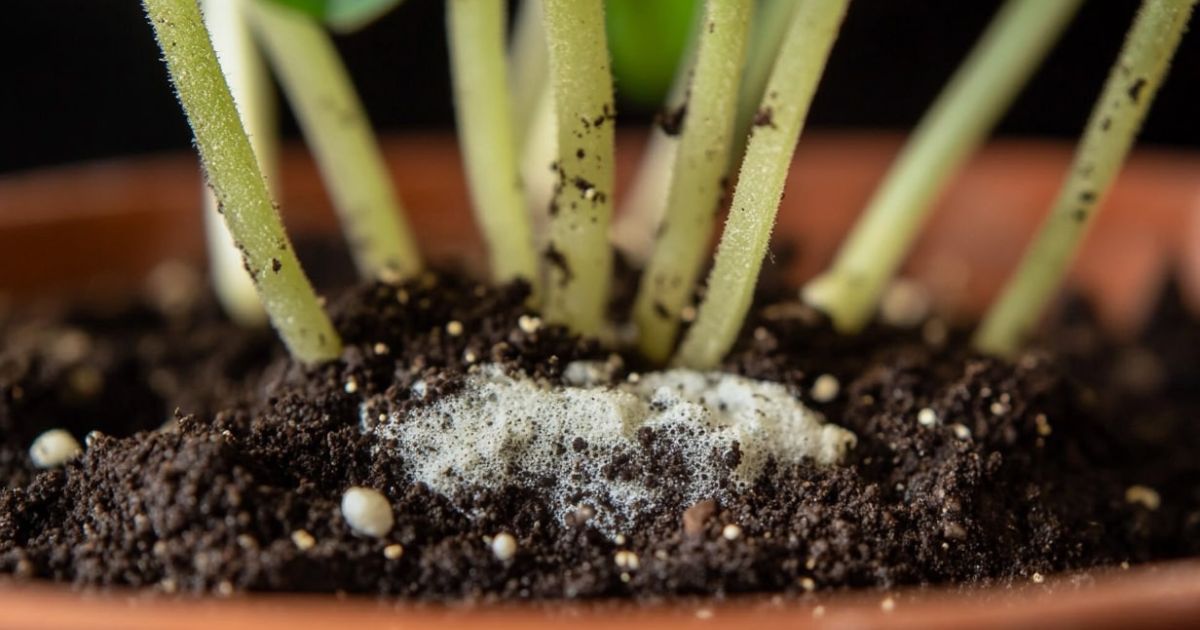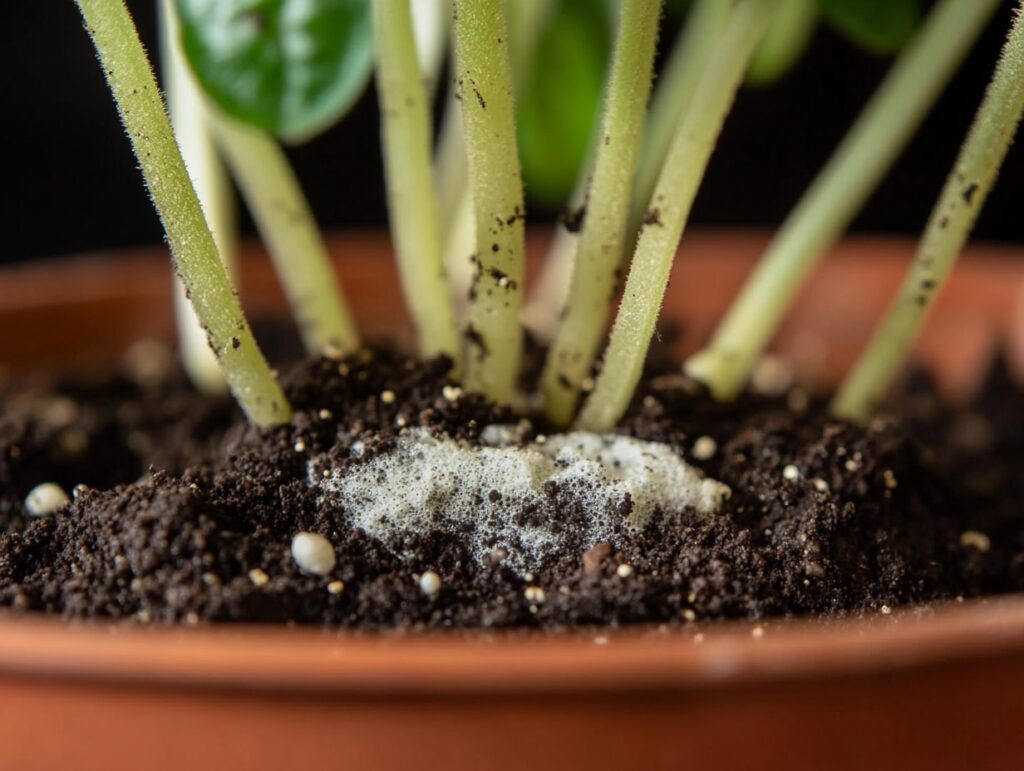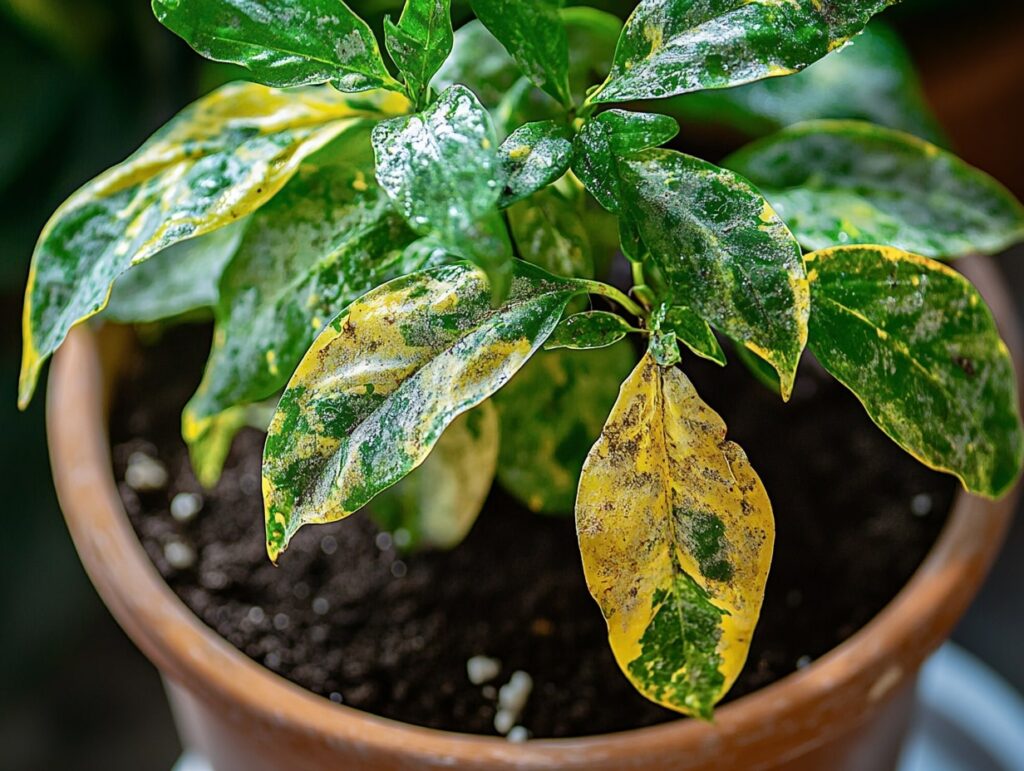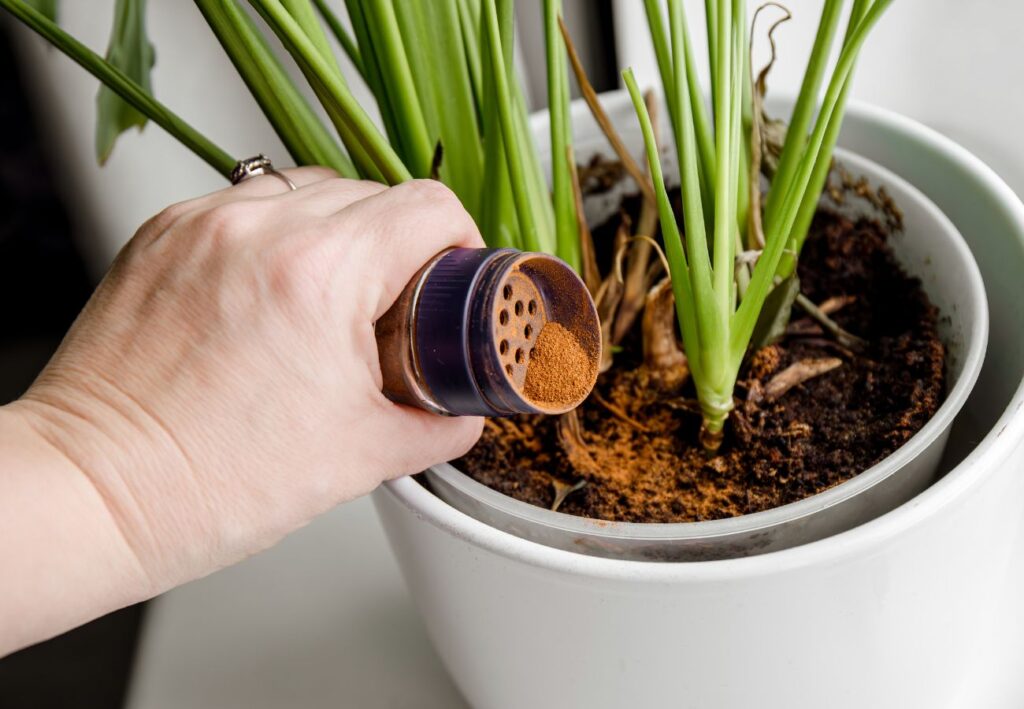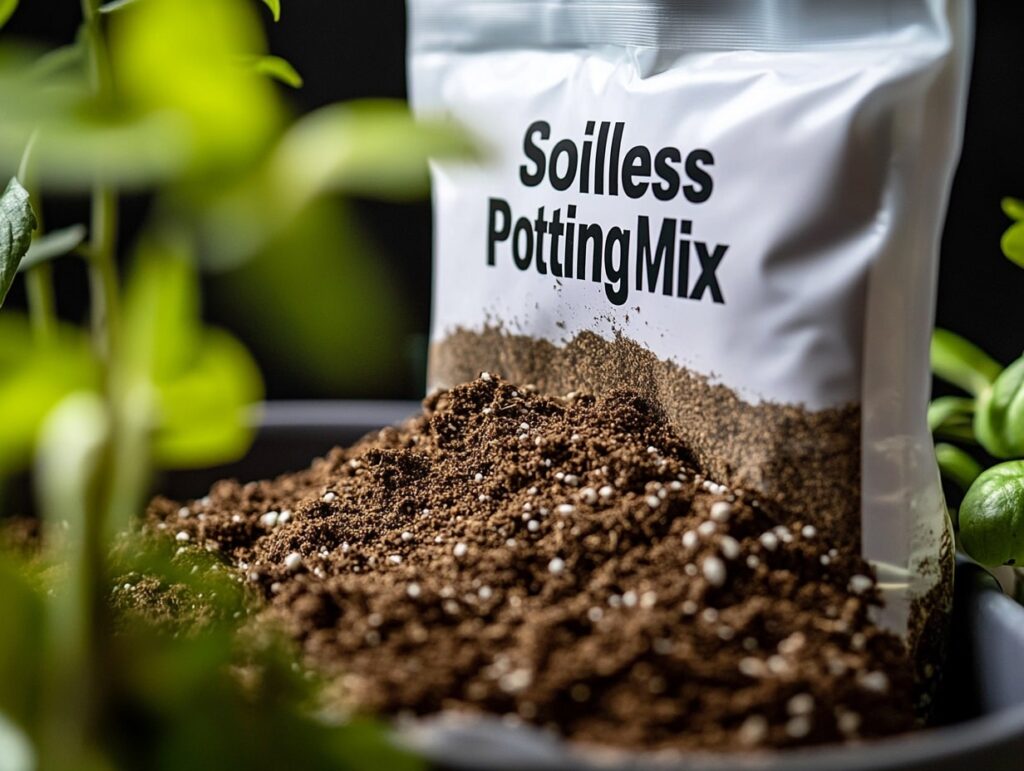Spotting mold on your houseplant soil can be frustrating, especially when you’ve done everything to keep your plants healthy. The good news is mold on houseplant soil is generally easy to fix and prevent.
With a few simple steps, you can revive your plants and ensure they continue to thrive.
You might see white, fuzzy patches on top of the soil which indicate the presence of mold. It’s often caused by overwatering, poor air circulation, and high humidity. By adjusting your watering habits and improving airflow, you can often resolve the issue quickly.
In addition to changing your watering routine, consider repotting your plant in fresh soil. This can help eliminate mold spores and give your plant a fresh start. Keep reading to learn detailed steps and tips on keeping your houseplants mold-free!
Understanding Mold on Houseplant Soil
Mold on houseplant soil can come in various types and is often caused by specific environmental conditions. Knowing the types of mold and what triggers their growth helps you manage and prevent them effectively.
Types of Mold
Several types of mold can appear on houseplant soil, each with its own characteristics.
White Mold: Also known as saprophytic fungi, this mold appears fuzzy and is generally harmless to plants.
Green Mold: This variety often indicates algae presence and thrives in damp conditions.
Black Mold: Less common but more harmful, black mold can be toxic and should be removed immediately.
Recognizing the types of mold helps you choose the best treatment method. While white mold is typically non-threatening, black mold poses a serious risk.
Causes of Mold Growth
Several factors contribute to mold growth on houseplant soil.
High Humidity: Mold thrives in humid environments. Keeping humidity levels low can help prevent mold.
Overwatering: Excess moisture in the soil creates a perfect breeding ground for mold. Water your plants only when the soil feels dry.
Poor Ventilation: Stagnant air encourages mold growth. Ensure good air circulation around your plants.
These factors create an ideal environment for mold. By managing humidity, watering habits, and ventilation, you can significantly reduce the risk of mold on your houseplant soil.
Health Risks of Mold for Houseplants
Mold on houseplant soil can hinder plant growth and visibly stress your plants. Understanding these risks can help you manage and mitigate them efficiently.
Effects on Plant Growth
Mold competes with your plants for nutrients, oxygen, and space. This competition can stifle the plant’s growth and impede root development. Mold can create a crust on the soil, reducing water penetration and choking the roots.
Mold can also form on leaves, blocking sunlight and affecting photosynthesis. This further limits the plant’s ability to produce the energy needed for growth. In severe cases, the entire ecosystem in the pot can become unbalanced, making it less hospitable for your plant.
Signs of Mold-Related Stress in Plants
Watch for yellowing or wilting leaves; these can be indicators of nutrient deprivation caused by mold. Another sign is slowed or stunted growth, as the plant struggles to gather essential nutrients and water. Leaf spots or mold patches on leaves can also signify mold stress.
You may also notice a general decline in plant vigor. The plant may look droopy or lifeless as a direct result of mold infestation. Pay attention to these symptoms to act quickly and meticulously address the issue.
Preventive Measures Against Mold
Maintaining a healthy environment for your houseplants is essential. Proper watering techniques and soil maintenance can greatly reduce the risk of mold growth.
Proper Watering Techniques
Watering correctly is crucial.
Overwatering is one of the main causes of mold. Water your plants only when the top inch of soil is dry. Use a pot with drainage holes to prevent water from sitting at the bottom.
Mornings are the best time to water. This allows the soil to dry throughout the day, reducing humidity levels that encourage mold.
Avoid getting water on the leaves; aim directly at the soil. Using a watering can with a narrow spout can help control the amount and direction of water.
Soil Maintenance
Proper soil care keeps mold away.
Use a well-draining soil mix. Consider adding perlite or sand to improve aeration.
Sterilizing soil before use can eliminate existing mold spores. Spread the soil on a baking sheet and heat at 180°F (82°C) for 30 minutes.
Repot your plants every 1-2 years to refresh the soil. Remove dead leaves and debris from the soil surface regularly to prevent mold growth, and ensure good air circulation around your plants by spacing them adequately.
Treatment Strategies for Mold Contamination
When dealing with mold contamination on houseplant soil, there are both natural and chemical treatments available. Depending on your preference for organic solutions or commercial products, there are different methods to effectively combat mold.
Natural Remedies
Natural remedies for mold contamination often involve using household items. One effective method is to sprinkle cinnamon on the soil surface. Cinnamon has antifungal properties that help eliminate mold.
Another approach is to increase air circulation around your plant by placing it in a well-ventilated area. Good airflow reduces moisture, deterring mold growth. You can also use a fan to improve ventilation.
Baking soda is another natural option. A light dusting on the soil surface can inhibit mold growth due to its alkaline nature. Mixing a small amount of apple cider vinegar with water and spraying it on the soil can also work, as vinegar has antimicrobial properties.
Chemical Solutions
For those who prefer chemical solutions, various commercial products are available. Fungicidal sprays can be applied directly to the soil and are specifically formulated to kill mold. Always follow the manufacturer’s instructions for the best results.
Another effective chemical treatment is hydrogen peroxide. Mixing a solution of one part hydrogen peroxide with four parts water and applying it to the soil can help kill mold. Be cautious not to overuse it, as it can harm your plant roots if applied too frequently.
In some cases, replacing the top layer of contaminated soil with fresh soil can mitigate mold issues. This method often works best in combination with fungicidal treatments.
Use a soilless potting mix if mold persists despite treatment. Soilless mixes drain better and reduce the risk of future mold growth.
Maintenance and Monitoring Post-Treatment
Ensuring the health of your houseplant soil post-treatment involves regular observation and consistent care. This helps prevent the recurrence of mold and promotes overall plant vitality.
Monitoring Soil Health
Check the soil’s moisture levels regularly. Mold thrives in damp conditions, so make sure the soil isn’t consistently wet. Use a moisture meter if necessary.
Ensure good airflow by occasionally stirring the top layer of soil. This prevents compactness and promotes drying.
Keep an eye out for any signs of mold growth, such as white or greenish fuzz. If you see any, remove it immediately with a spoon.
Regularly inspect the underside of the plant’s leaves and the top of the soil to catch mold early.
Routine Plant Care Tips
Water your plant only when the top inch of soil feels dry. Overwatering is one of the primary causes of mold.
Use a pot with drainage holes to help excess water escape. This prevents water from sitting in the soil.
Place your plant in an area with good air circulation. This helps the soil dry out more quickly.
Feed your plant with an appropriate fertilizer, but avoid over-fertilizing as it can lead to excessive moisture retention in the soil.
While discovering mold on your houseplant soil can be concerning, it is a manageable issue with the right approach.
By understanding the causes of mold and implementing preventive measures such as proper watering, good ventilation, and regular soil maintenance, you can keep your plants healthy and mold-free.
Remember, early detection and treatment are key to ensuring your houseplants continue to thrive. With a bit of attention and care, your indoor garden will remain a vibrant and inviting space, free from the worries of mold.
